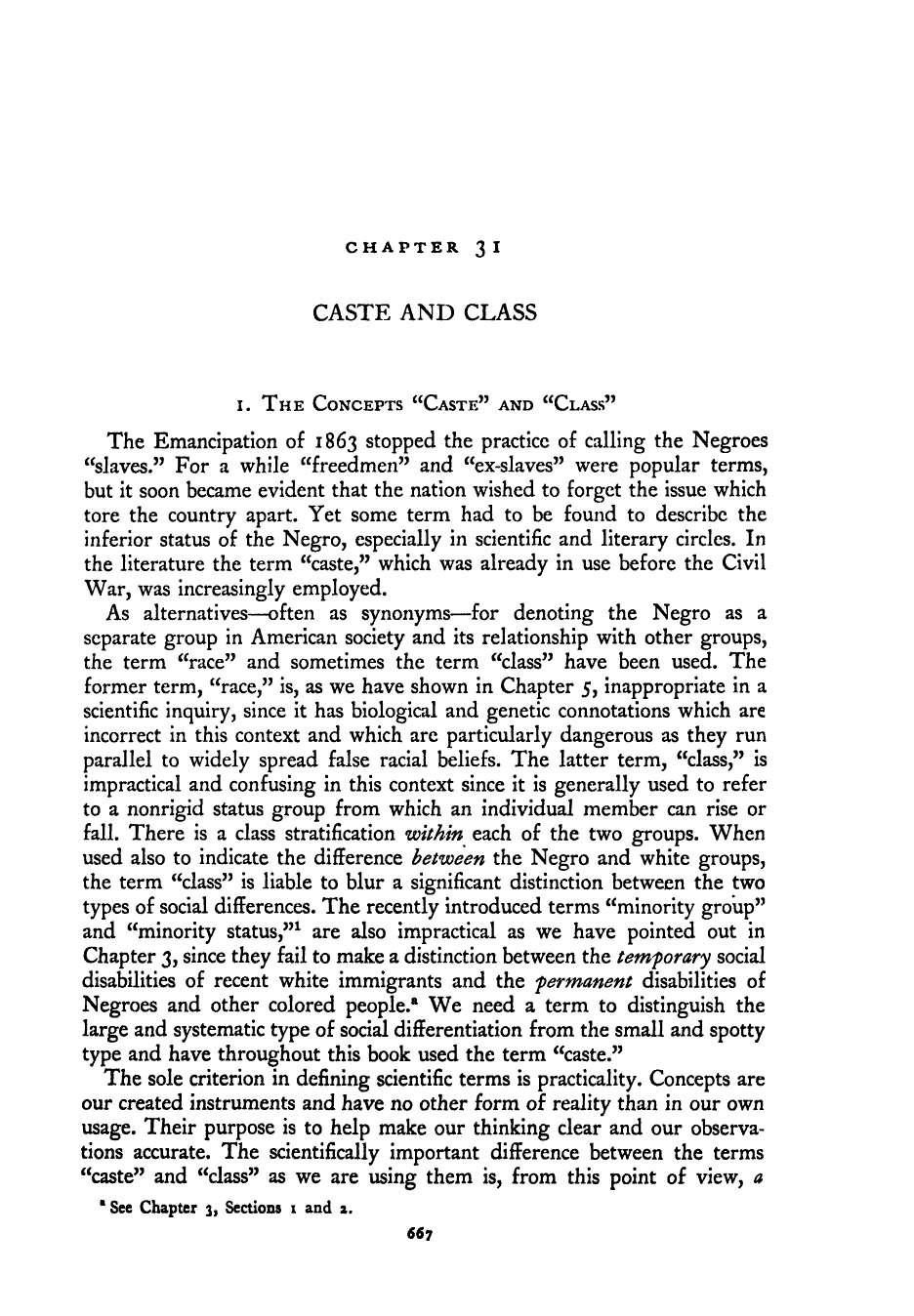Note: Gunnar Myrdal died in 1987, less than 70 years ago. Therefore, this work is protected by copyright, restricting your legal rights to reproduce it. However, you are welcome to view it on screen, as you do now. Read more about copyright.
Full resolution (TIFF) - On this page / på denna sida - VIII. Social Stratification - 31. Caste and Class - 1. The Concepts “Caste” and “Class”

<< prev. page << föreg. sida << >> nästa sida >> next page >>
Below is the raw OCR text
from the above scanned image.
Do you see an error? Proofread the page now!
Här nedan syns maskintolkade texten från faksimilbilden ovan.
Ser du något fel? Korrekturläs sidan nu!
This page has never been proofread. / Denna sida har aldrig korrekturlästs.
CHAPTER 31
CASTE AND CLASS
I. The Concepts “Caste” and “Class”
The Emancipation of 1863 stopped the practice of calling the Negroes
“slaves.” For a while “freedmen” and “ex-slaves” were popular terms,
but it soon became evident that the nation wished to forget the issue which
tore the country apart. Yet some term had to be found to describe the
inferior status of the Negro, especially in scientific and literary circles. In
the literature the term “caste,” which was already in use before the Civil
War, was increasingly employed.
As alternatives—often as synonyms—for denoting the Negro as a
separate group in American society and its relationship with other groups,
the term “race” and sometimes the term “class” have been used. The
former term, “race,” is, as we have shown in Chapter 5, inappropriate in a
scientific inquiry, since it has biological and genetic connotations which are
incorrect in this context and which arc particularly dangerous as they run
parallel to widely spread false racial beliefs. The latter term, “class,” is
impractical and confusing in this context since it is generally used to refer
to a nonrigid status group from which an individual member can rise or
fall. There is a class stratification within each of the two groups. When
used also to indicate the difference between the Negro and white groups,
the term “class” is liable to blur a significant distinction between the two
types of social differences. The recently introduced terms “minority group”
and “minority status,”^ are also impractical as we have pointed out in
Chapter 3, since they fail to make a distinction between the temforary social
disabilities of recent white immigrants and the fermanent disabilities of
Negroes and other colored people.® We need a term to distinguish the
large and systematic type of social differentiation from the small and spotty
type and have throughout this book used the term “caste.”
The sole criterion in defining scientific terms is practicality. Concepts are
our created instruments and have no other form of reality than in our own
usage. Their purpose is to help make our thinking clear and our observa-
tions accurate. The scientifically important difference between the terms
“caste” and “class” as we are using them is, from this point of view, a
‘See Chapter 3, Sections 1 and 2.
657
<< prev. page << föreg. sida << >> nästa sida >> next page >>